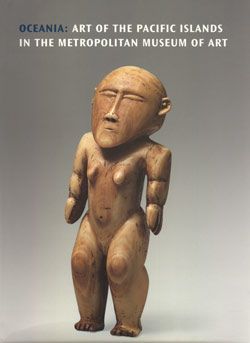Figure for Yam ceremony (Mindja or Amarki)
Not on view
The Kwoma, Nukuma, and Yasyin-Mayo peoples of the Washkuk Hills region north of the upper Sepik River share a distinctive artistic tradition centered on an annual
sequence of ceremonies devoted to the cultivation of yams. A supernaturally powerful food, yams cannot be eaten until the spirits responsible for their growth have been appropriately honored. Following the yam harvest, the spirits are celebrated in a sequence of three ceremonies, yena, mindja, and noukwi. Each ceremony requires the creation of a specific type of figure.
In the first two rituals, yena and mindja, the figures are lavishly adorned and displayed atop a large basket-like structure containing part of the yam crop. The yena rites involve the display of wood heads with neck-like stalks. In some cases, ceramic yena heads are also used. The mindja ceremony involves plank-like figures, such as this one, with yena-like faces and bodies adorned with diamond-shaped motifs representing banana leaves and undulating forms depicting the coils of snakes. The final ceremony, noukwi, restricted to senior initiated men, involves the display of female figures.
This image cannot be enlarged, viewed at full screen, or downloaded.


